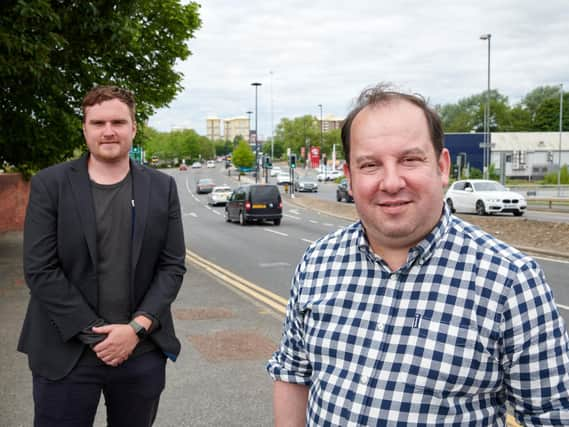Wakefield district's roads rated as good


The council manages and maintains over 1,454km of roads and over 1,900km of footways, cycle lanes and tracks.
The road network laid end to end would stretch further than from Land’s End to John O’Groats (which is 1,400km). The footways network is the equivalent of climbing the Yorkshire Three Peaks 48 times.
Advertisement
Hide AdAdvertisement
Hide AdThroughout the year, teams carry out surveys across the whole road and footway network to establish its condition and identify defects that need urgent attention, in line with national guidance.
The condition of the highway network has been rated overall as good in the Highways Condition State of the Nation report – which sets out standards against which performance is measured.
The latest report shows Wakefield compares well to other areas, despite challenges of severe weather earlier this year leading to increased demands for maintenance and the reduction in the funding received from central government for road maintenance.
Coun Matthew Morley, Wakefield Council’s Cabinet Member for Planning and Highways, said: “It is very important that we have an effectively managed network or roads, paths and tracks to benefit communities and businesses to move safely and effectively around the district.
Advertisement
Hide AdAdvertisement
Hide Ad“Having a strong transport network also contributes to the development of the local economy and helps support employment growth. “
Systems are in place to support planning over both the short and long term, and ensuring safer and more reliable journeys across the whole network ad well as promoting partnership working across boundaries and sharing of knowledge.
Grants that the council receive also help to maintain other highway infrastructure including the responsibility for 230 structures, including bridges, retaining walls and culverts and 18,000 traffic signs.
When making decisions about the roads to repair, public safety always comes first and so priority is given to issues that present the greatest danger and risk.
Advertisement
Hide AdAdvertisement
Hide AdThe council said the most serious defects are fixed within 24 hours; with almost 97% of defects attended to in this time.
It said this way of working is to minimise congestion on the roads and be more efficient in the way work is carried out.
During February, floods and snow resulted in a significant number of potholes across the district’s roads in a short period of time.
The council invested an additional funding into the service on top of the £15m allocated to highways for the 2020/21 financial year, to identify each of the potholes and make them safe, whilst also planning follow up patching works in some of the more damaged areas.
Advertisement
Hide AdAdvertisement
Hide AdIn the few weeks after the severe weather, 6,125 potholes were identified and filled and £767,000 of follow up patching works have been completed or scheduled for repair.
Coun Morley said: “We reacted very quickly to address this very difficult situation. As a council we recognise it’s not possible to do everything – as the road network has for a long time suffered from chronic underfunding – but we prioritise safety and work hard with the resources we have to provide good quality, and reliable road network. We are not complement and will continue to work hard to deliver a strong service to benefits residents, businesses and residents.”
The annual maintenance programme for 2021/22 identifies a planned schedule of work to maintain and improve roads across the district and enables the Council to prioritise the work. For more information visit https://www.wakefield.gov.uk/roads-and-transport/highway-maintenance/highways-structural-maintenance